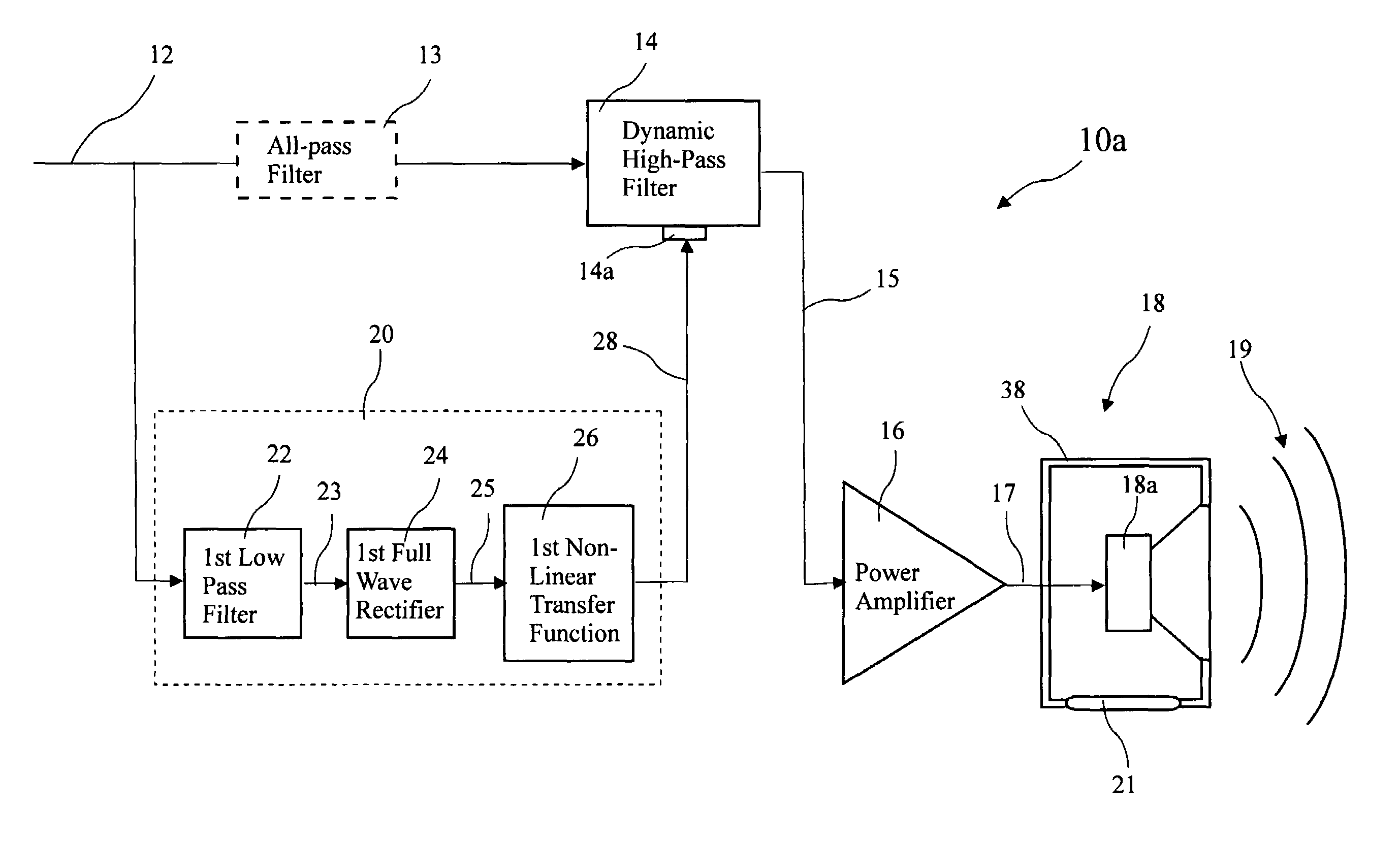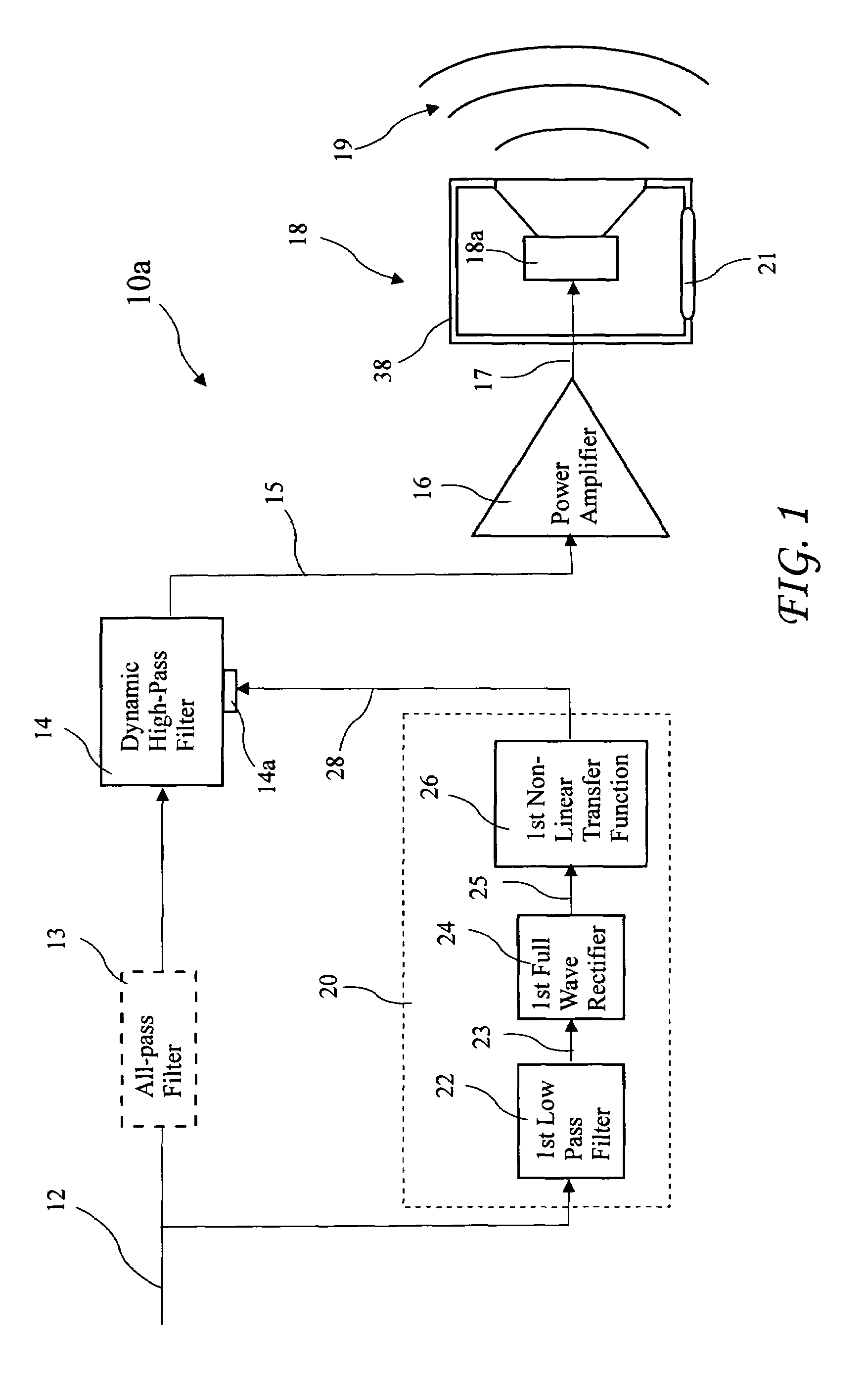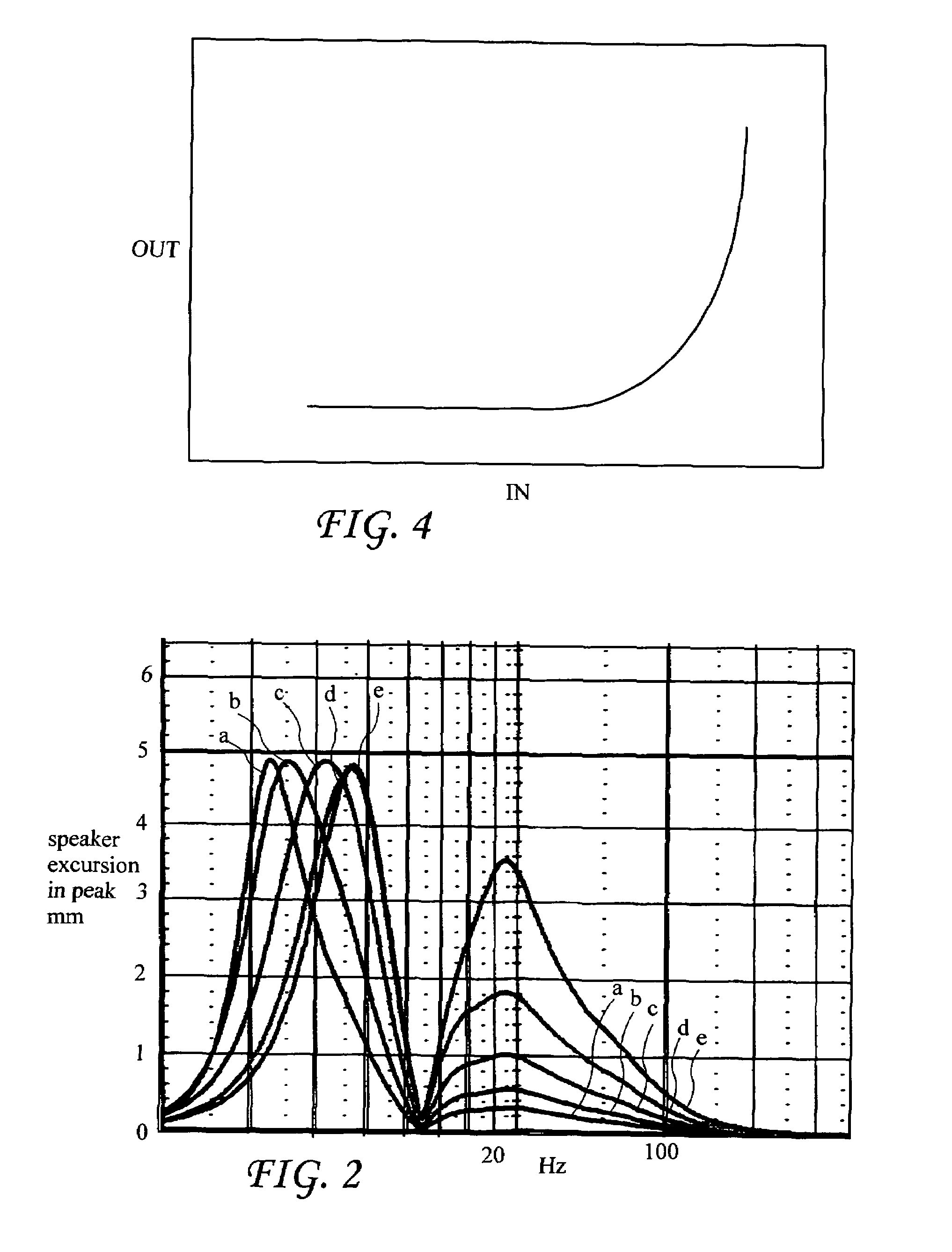Low-frequency range extension and protection system for loudspeakers
a protection system and low frequency technology, applied in the direction of transducer protection circuits, limiting amplitudes, electrical devices, etc., can solve the problems of limiting the maximum acoustic output capability of the acoustic output, heat buildup, signal distortion, etc., to extend the low frequency bandwidth of the audio system
- Summary
- Abstract
- Description
- Claims
- Application Information
AI Technical Summary
Benefits of technology
Problems solved by technology
Method used
Image
Examples
Embodiment Construction
[0036]The following description is of the best mode presently contemplated for carrying out the invention. This description is not to be taken in a limiting sense, but is made merely for the purpose of describing one or more preferred embodiments of the invention. The scope of the invention should be determined with reference to the claims.
[0037]A first system 10a according to the present invention for extending low frequency performance of a loudspeaker is shown in FIG. 1. The system 10a includes a dynamic high-pass filter 14 having at least two poles and at least two zeros at the origin (which make it a high-pass filter). The dynamic high-pass filter 14 processes an unfiltered input signal 12 to generate a filtered signal 15 provided as an amplifier input signal to a power amplifier 16, and power amplifier 16 amplifies the filtered signal 15 to provide a speaker signal 17 to a loudspeaker 18. The loudspeaker 18 includes a speaker driver 18a residing in a speaker enclosure 38 and r...
PUM
 Login to View More
Login to View More Abstract
Description
Claims
Application Information
 Login to View More
Login to View More - R&D
- Intellectual Property
- Life Sciences
- Materials
- Tech Scout
- Unparalleled Data Quality
- Higher Quality Content
- 60% Fewer Hallucinations
Browse by: Latest US Patents, China's latest patents, Technical Efficacy Thesaurus, Application Domain, Technology Topic, Popular Technical Reports.
© 2025 PatSnap. All rights reserved.Legal|Privacy policy|Modern Slavery Act Transparency Statement|Sitemap|About US| Contact US: help@patsnap.com



